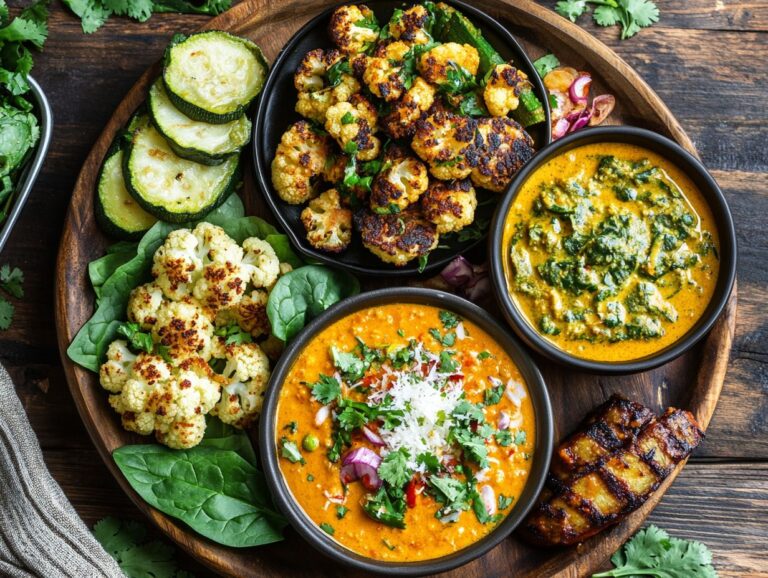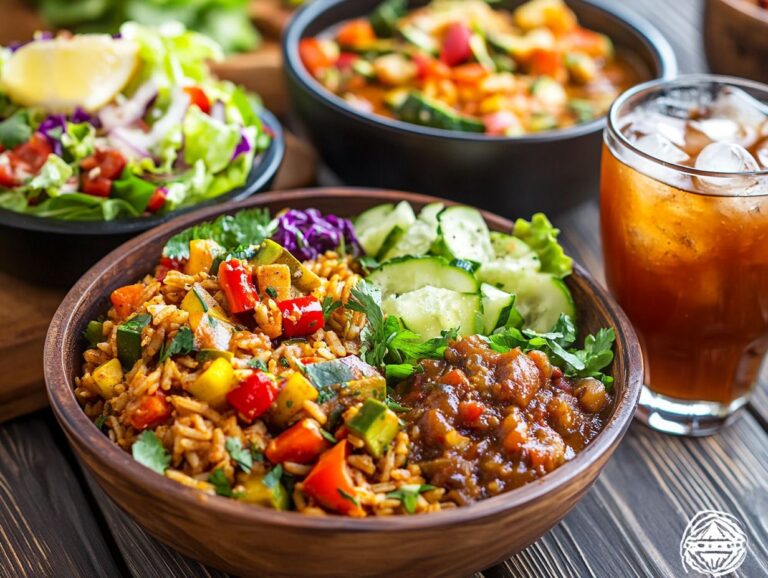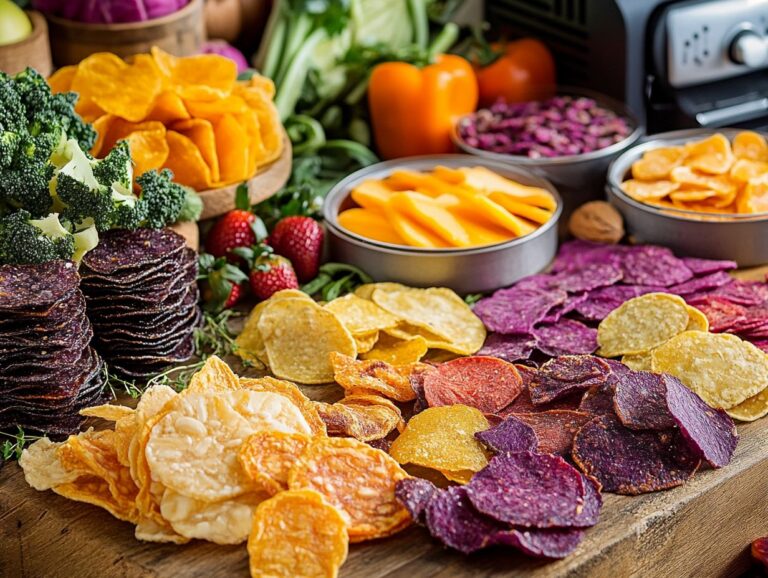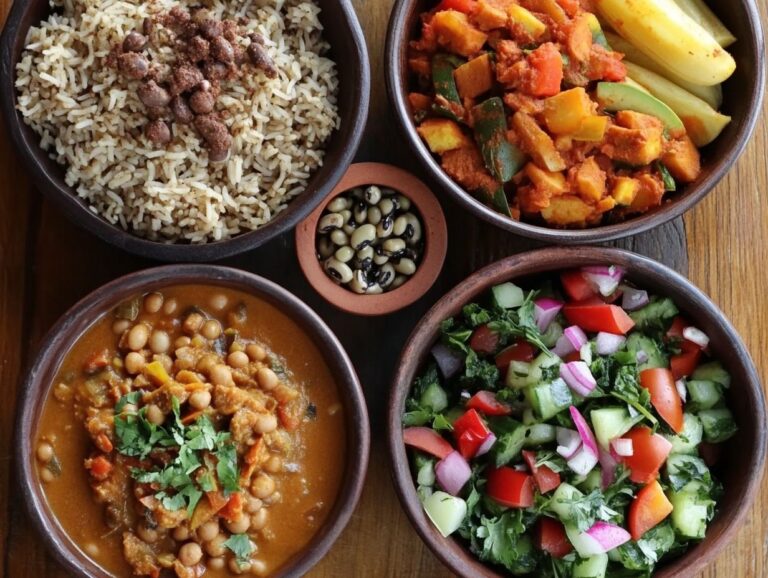In this guide, you will explore the benefits and possibilities of a raw vegan diet, which emphasizes unprocessed, uncooked plant foods. This approach provides a healthy way to nourish the body while aligning with ethical and environmental beliefs. You will discover the advantages of adopting a raw vegan diet, tips for getting started, essential ingredients to keep on hand, and a variety of delicious recipes for every meal and snack. Whether you are a long-time vegan or just venturing into the realm of uncooked, unprocessed plant foods, there is something for everyone to enjoy.
What is a Raw Vegan Diet?
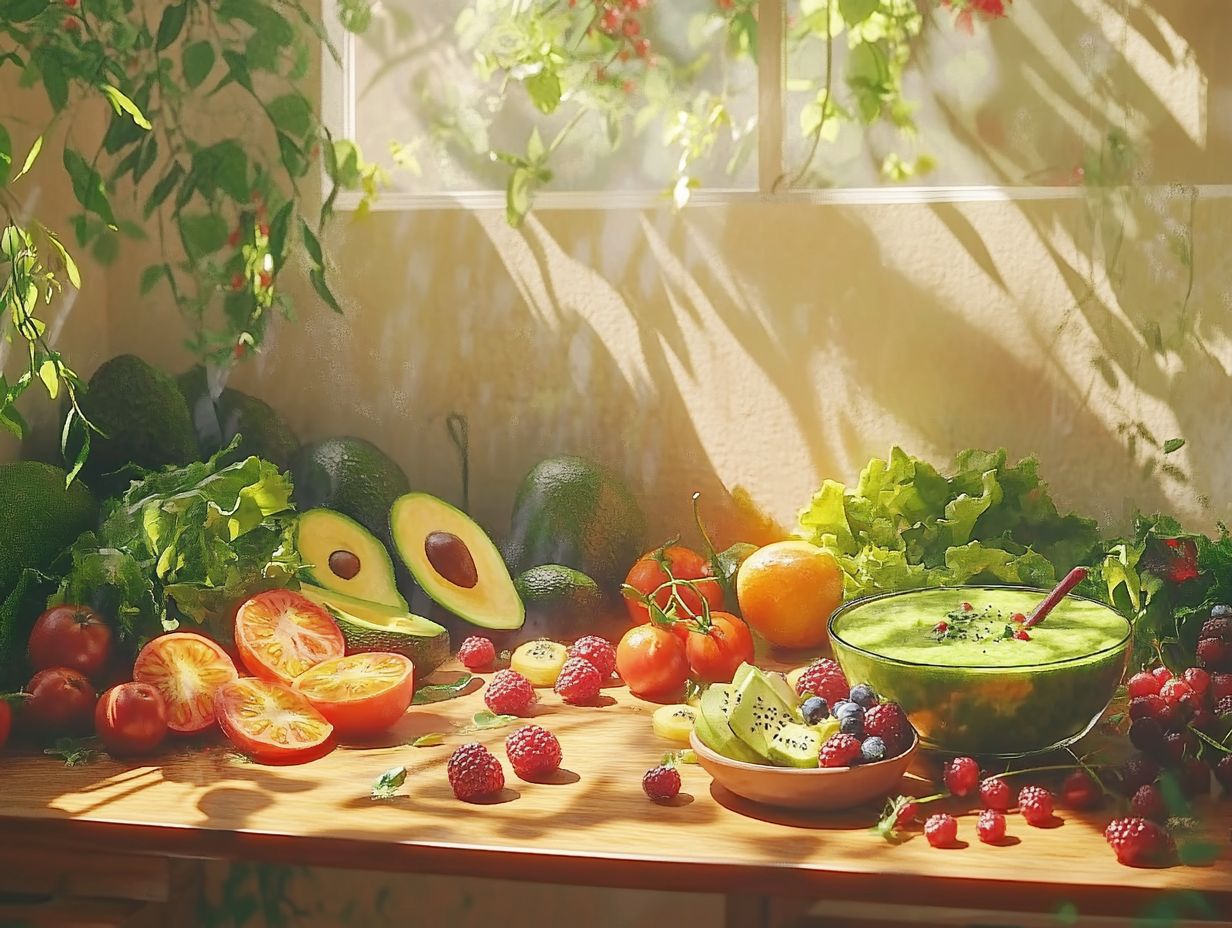 A raw vegan diet is a lifestyle that consists of consuming uncooked meals, including whole foods like fruits, vegetables, nuts, seeds, and sprouted grains. This type of diet not only emphasizes healthy eating but also aligns with ethical concerns such as animal rights and environmental sustainability. Raw vegan diets primarily feature plant-based recipes and fresh ingredients, alongside organic produce, to maximize vegan nutrition and minimize processed foods. The fusion of raw and vegan diets has emerged as part of a broader raw food lifestyle, appealing to health enthusiasts and individuals seeking to detoxify their bodies.
A raw vegan diet is a lifestyle that consists of consuming uncooked meals, including whole foods like fruits, vegetables, nuts, seeds, and sprouted grains. This type of diet not only emphasizes healthy eating but also aligns with ethical concerns such as animal rights and environmental sustainability. Raw vegan diets primarily feature plant-based recipes and fresh ingredients, alongside organic produce, to maximize vegan nutrition and minimize processed foods. The fusion of raw and vegan diets has emerged as part of a broader raw food lifestyle, appealing to health enthusiasts and individuals seeking to detoxify their bodies.
Benefits of a Raw Vegan Diet
The raw vegan diet offers several benefits, including weight loss, but the most significant advantages are improved nutrient absorption, detoxification, and the intake of anti-inflammatory foods. Together, these benefits contribute to a wide range of positive outcomes associated with this diet. Individuals who consume organic fruits and vegetables, along with nutrient-rich raw food recipes, often experience increased energy, clearer skin, and better digestion. Incorporating superfoods like chia seeds and raw cacao into a raw vegan meal plan can further enhance these benefits. As more people embrace the principles of holistic nutrition and sustainable eating, the raw food movement continues to grow.
Improved Nutrition and Health
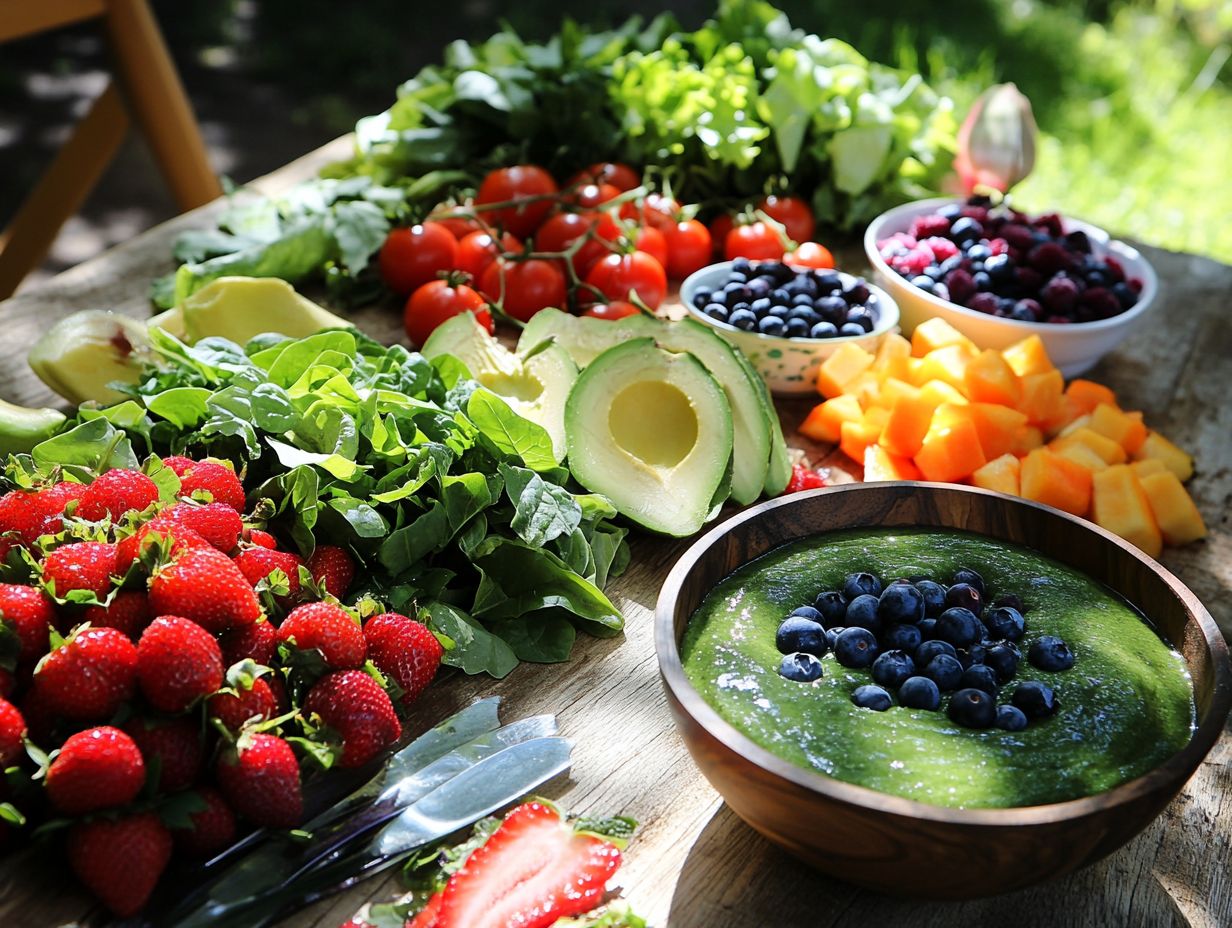 Improved nutrition and health benefits are often cited as the primary reasons for adopting a raw vegan diet, which emphasizes the consumption of enzyme-rich foods that are naturally high in nutrients and rich in vitamins, minerals, and antioxidants. The incorporation of a diverse array of vibrant colors from colorful fruits and vegetables ensures that essential nutrients are included in this type of diet. For instance, vitamin C, found in citrus fruits, is vital for a healthy immune system, while vitamin A, present in leafy greens and brightly colored peppers, plays a crucial role in maintaining good vision. Additionally, nutrient-dense options such as almonds, chia seeds, and hemp hearts provide healthy fats, protein, and omega-3 fatty acids, all of which are important for brain health and reducing inflammation. Examples of nutrient-dense, healthy meals include:
Improved nutrition and health benefits are often cited as the primary reasons for adopting a raw vegan diet, which emphasizes the consumption of enzyme-rich foods that are naturally high in nutrients and rich in vitamins, minerals, and antioxidants. The incorporation of a diverse array of vibrant colors from colorful fruits and vegetables ensures that essential nutrients are included in this type of diet. For instance, vitamin C, found in citrus fruits, is vital for a healthy immune system, while vitamin A, present in leafy greens and brightly colored peppers, plays a crucial role in maintaining good vision. Additionally, nutrient-dense options such as almonds, chia seeds, and hemp hearts provide healthy fats, protein, and omega-3 fatty acids, all of which are important for brain health and reducing inflammation. Examples of nutrient-dense, healthy meals include:
- Smoothie bowls topped with fresh berries and coconut
- Raw energy bars made with dates and nuts
These nutrient-dense meals are easy to incorporate into a daily diet, allowing individuals to enjoy the benefits of a raw food lifestyle while ensuring they receive adequate nutrition and energy.
Environmental and Ethical Considerations
Environmental and ethical considerations play a crucial role for many individuals who adopt a raw vegan diet, as it promotes sustainable eating and a commitment to reducing personal carbon footprints. One of the most significant impacts of a raw vegan diet is its contribution to sustainable eating and its environmental effect. Being entirely plant-based and free from animal and dairy products, this diet greatly reduces greenhouse gas emissions and conserves valuable water resources. Research indicates that a plant-based diet can lower an individual’s food-related carbon footprint by up to 50%. For instance, producing a pound of beef requires approximately 1,800 gallons of water, while most fruits and vegetables that constitute a raw vegan diet demand significantly less water to grow. Furthermore, followers of this diet primarily consume local and seasonal fruits and vegetables, which further minimizes transportation emissions. This connection between food choices, sustainability issues, and animal welfare can encourage others to reconsider their dietary habits, aligning their health goals with a more sustainable and animal-friendly world.
Getting Started with Raw Vegan Diet
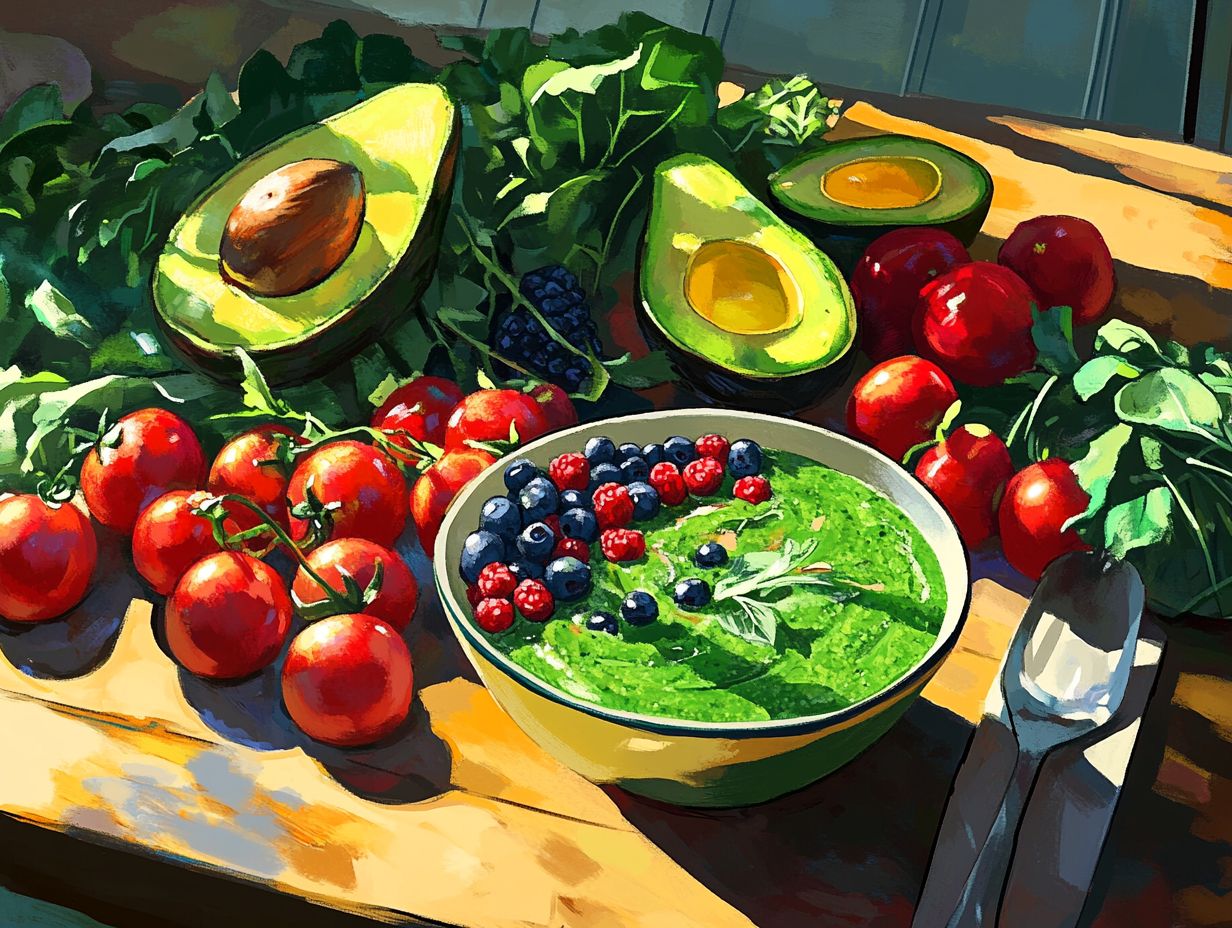 Embracing a raw vegan diet encourages individuals to expand their palates and explore the versatility of plant-based ingredients through the development of a raw vegan meal plan. Essential foods in this diet include fresh produce, nuts, seeds, and sprouted grains, which form the foundation of all raw food recipes. Meal preparation strategies can facilitate the transition by ensuring that healthy foods and snacks are readily available throughout the week. Embracing culinary creativity is crucial for discovering new flavors and combinations while adhering to the principles of healthy eating and raw food processing.
Embracing a raw vegan diet encourages individuals to expand their palates and explore the versatility of plant-based ingredients through the development of a raw vegan meal plan. Essential foods in this diet include fresh produce, nuts, seeds, and sprouted grains, which form the foundation of all raw food recipes. Meal preparation strategies can facilitate the transition by ensuring that healthy foods and snacks are readily available throughout the week. Embracing culinary creativity is crucial for discovering new flavors and combinations while adhering to the principles of healthy eating and raw food processing.
Essential Foods and Ingredients
Essential foods and ingredients for a raw vegan diet include organic fruits, fresh vegetables, nuts, seeds, and sprouted grains, all of which provide vital nutrients and enhance the flavor and texture of meals. This diet promotes a health-centric lifestyle by encouraging the consumption of unprocessed foods that maintain their natural state, and it is rich in vitamins, minerals, and antioxidants. For instance, fruits such as berries, bananas, and apples add natural sweetness and are high in fiber, making them ideal for smoothies or snacks. Leafy greens like kale and spinach are nutrient-dense and can be incorporated into dressings or salads for optimal health. Nuts such as cashews and almonds offer carbohydrates, protein, and fiber while adding a satisfying crunch. Additionally, seeds like chia and flaxseeds are rich in Omega-3 fatty acids and contribute pleasant texture. These ingredients can be creatively used to make delicious raw desserts, energy balls, or salads.
Meal Planning and Preparation Tips
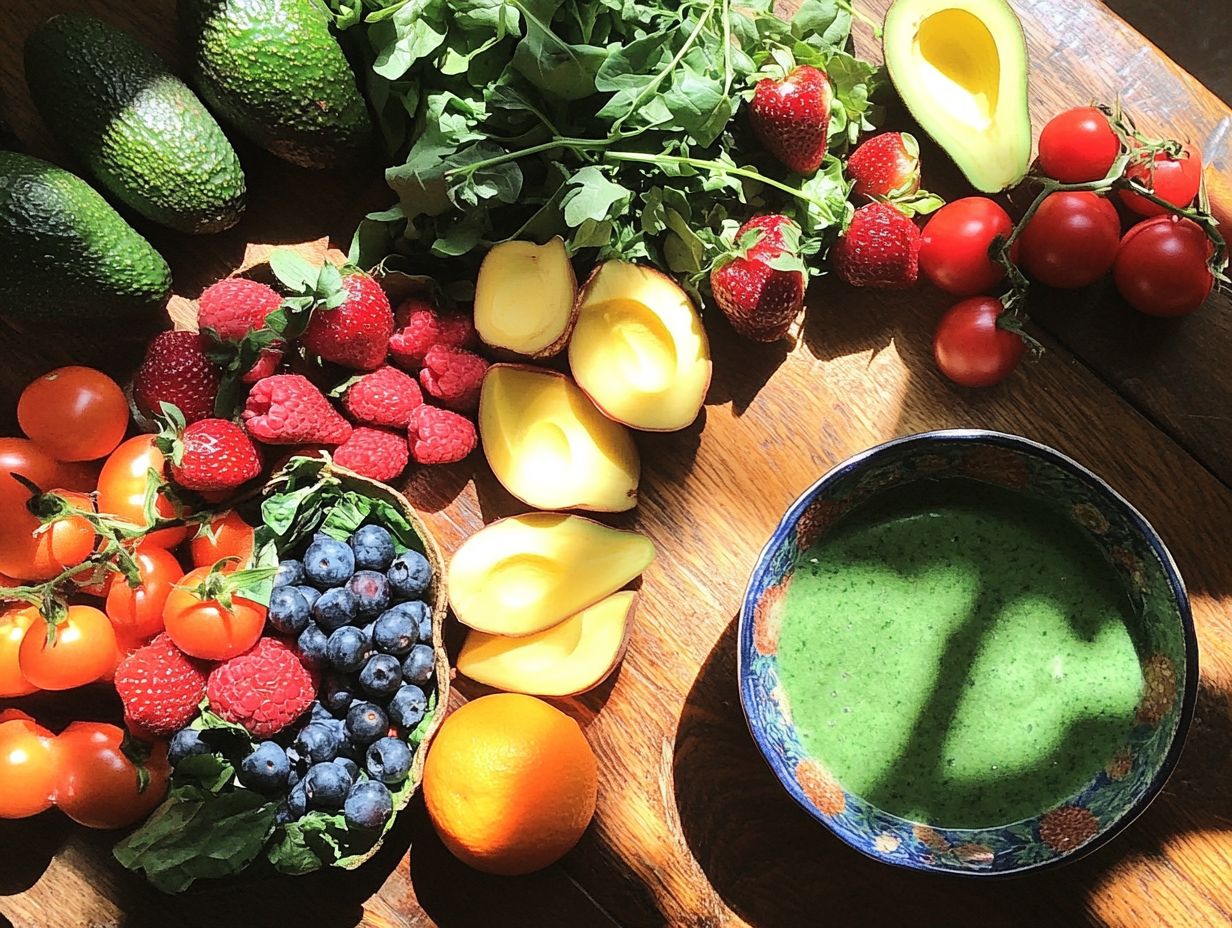 Effective meal planning and preparation tips are essential for successfully adopting a raw vegan diet, ensuring a steady supply of fresh salads, easy raw recipes, and nutrient-rich meals throughout the week. Here are some key tips:
Effective meal planning and preparation tips are essential for successfully adopting a raw vegan diet, ensuring a steady supply of fresh salads, easy raw recipes, and nutrient-rich meals throughout the week. Here are some key tips:
- Use a Variety of Colors: Incorporating a range of colorful fruits and vegetables creates visually appealing dishes that are also very filling.
- Make Balanced Meals: Combining leafy greens with healthy fats, such as avocados and seeds, results in hearty meals that provide essential nutrients.
- Plan for Snacks: Raw energy bars made with nuts and dried fruits are an excellent way to satisfy cravings between meals.
- Store Pre-Chopped Veggies: Keeping chopped vegetables in the fridge saves time and encourages healthier choices over processed foods.
Delicious Raw Vegan Recipes
Delicious raw vegan recipes are ideal as they showcase the variety of raw ingredients and home cooking techniques utilized in vegan cuisine, including salads, gourmet raw dishes, and desserts. Fresh fruits and vegetables, nuts, and seeds serve as the foundation for creating flavorful meals that help vegans achieve their health goals. Some popular raw vegan recipes include:
- Smoothie bowls
- Energy bars
- Soups
Breakfast Ideas
Some of the most nutritious and energizing breakfast options for a raw vegan diet include green smoothies, chia seed pudding, and avocado dishes. Smoothie bowls can be prepared using seasonal fruits and superfoods, and topped with nuts and seeds for added texture. Chia seed pudding can be made in advance, ensuring a convenient breakfast that is packed with nutrients. Additional raw vegan breakfast choices can include healthy nut-based granola, fresh fruit salads, and nut milk. These foods provide the energy needed for individuals on the go while adhering to the raw food lifestyle. By incorporating nutrient-dense ingredients such as hemp seeds, goji berries, and almond milk, raw vegan breakfasts can be tailored to meet individual preferences and dietary needs. Individuals with active lifestyles often thrive on raw foods that are easy to prepare, satisfying, and delicious.
Lunch and Dinner Options
For lunch and dinner, raw vegan cuisine offers a variety of hearty and flavorful options, including salads, raw pasta, and raw soups. A salad might feature a delightful combination of heirloom tomatoes, avocado, and sprouts, all drizzled with a lemon-tahini sauce that enhances the natural flavors of the ingredients. Raw pasta, often referred to as zoodles when made with spiralized zucchini, can be both colorful and nutritious when paired with a homemade pesto made from fresh basil and walnuts. Additionally, a raw soup can consist of a creamy blend of avocado and cilantro, served at a pleasantly cool temperature.
Snacks and Desserts
Snacks and raw desserts are the most diverse food categories within the raw vegan diet, featuring some of the most delicious raw food recipes, including vibrant salads and raw fruit snacks. This category includes healthy raw desserts, energizing vegan snacks, and dehydrated options perfect for on-the-go eating. Raw energy foods such as flaxseed crackers, energy balls, raw nut snacks, and fruit salads provide an ideal quick boost between meals. In contrast, gourmet raw treats like raw chocolate mousse and raw strawberry tiramisu offer an indulgent sweet finish to any meal. These healthy snacks and raw desserts are easy to prepare, utilizing fresh ingredients such as fruits, nuts, and natural sweeteners. Not only are they delicious and satisfying, but they also align with the healthy eating principles of the raw vegan diet, emphasizing enzyme-rich foods and vegan nutrition. Creating raw vegan desserts, such as chocolate avocado mousse or coconut raw cheesecake, allows you to enjoy sweet treats without the worry of excessive artificial sugars or unhealthy ingredients. Natural sweeteners like dates or maple syrup enhance the flavor without compromising health. Incorporating superfoods like raw cacao and following plant-based recipes contribute to sustainable eating and vegan nutrition. Incorporating nutrient-dense ingredients such as chia seeds or raw cacao adds vitamins and minerals to the diet while ensuring that the recipes remain high in calories and healthy fats ideal for those looking to gain weight. These whole foods provide essential vegan protein sources and antioxidants, enhancing overall health benefits. Exploring various options for raw snacks and desserts fosters culinary creativity in the kitchen and supports a wholesome lifestyle. Embracing the raw food lifestyle includes trying colorful plates, raw food workshops, and experimenting with raw food preparation techniques like dehydrated foods and sprouted grains.
